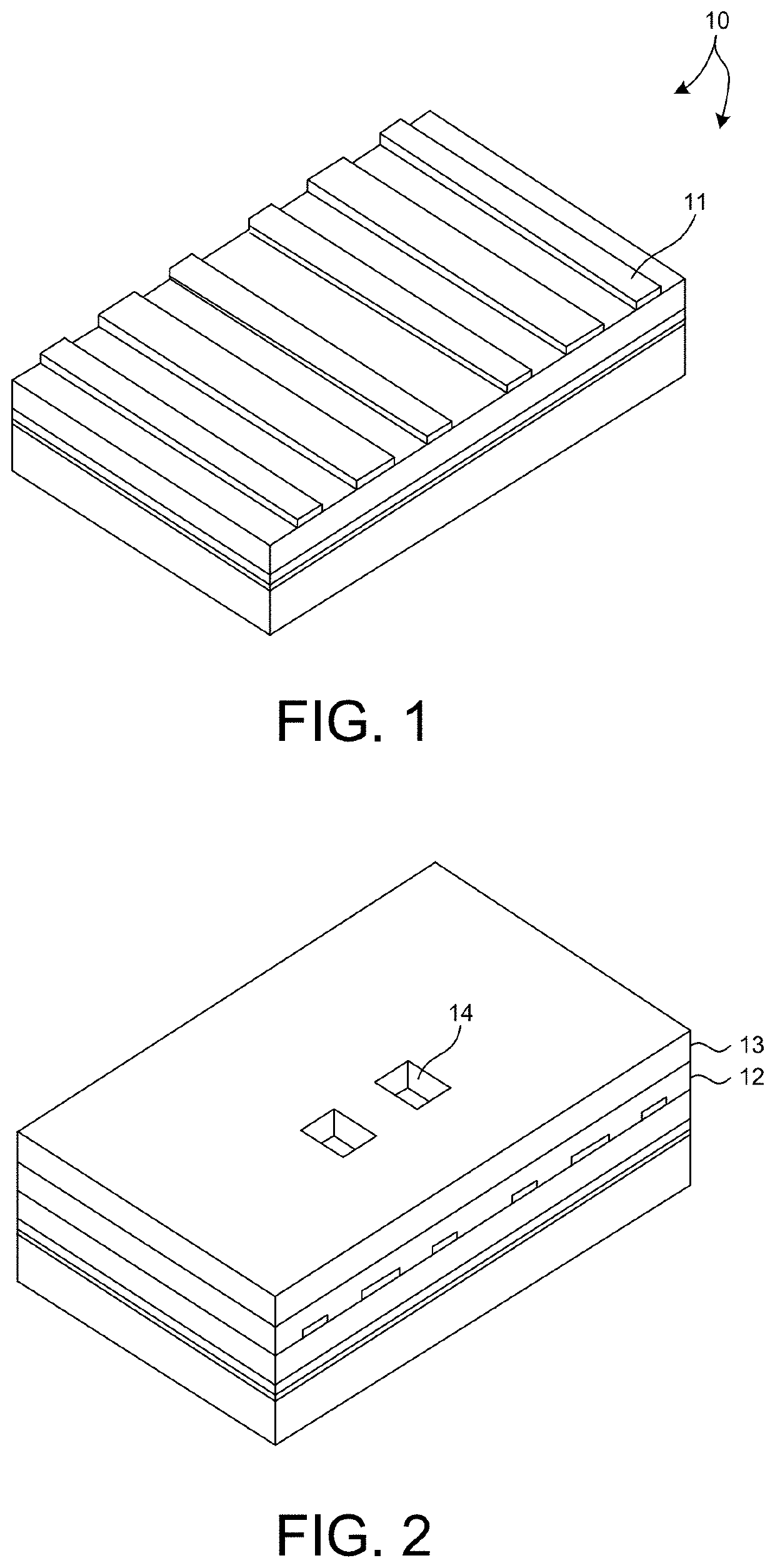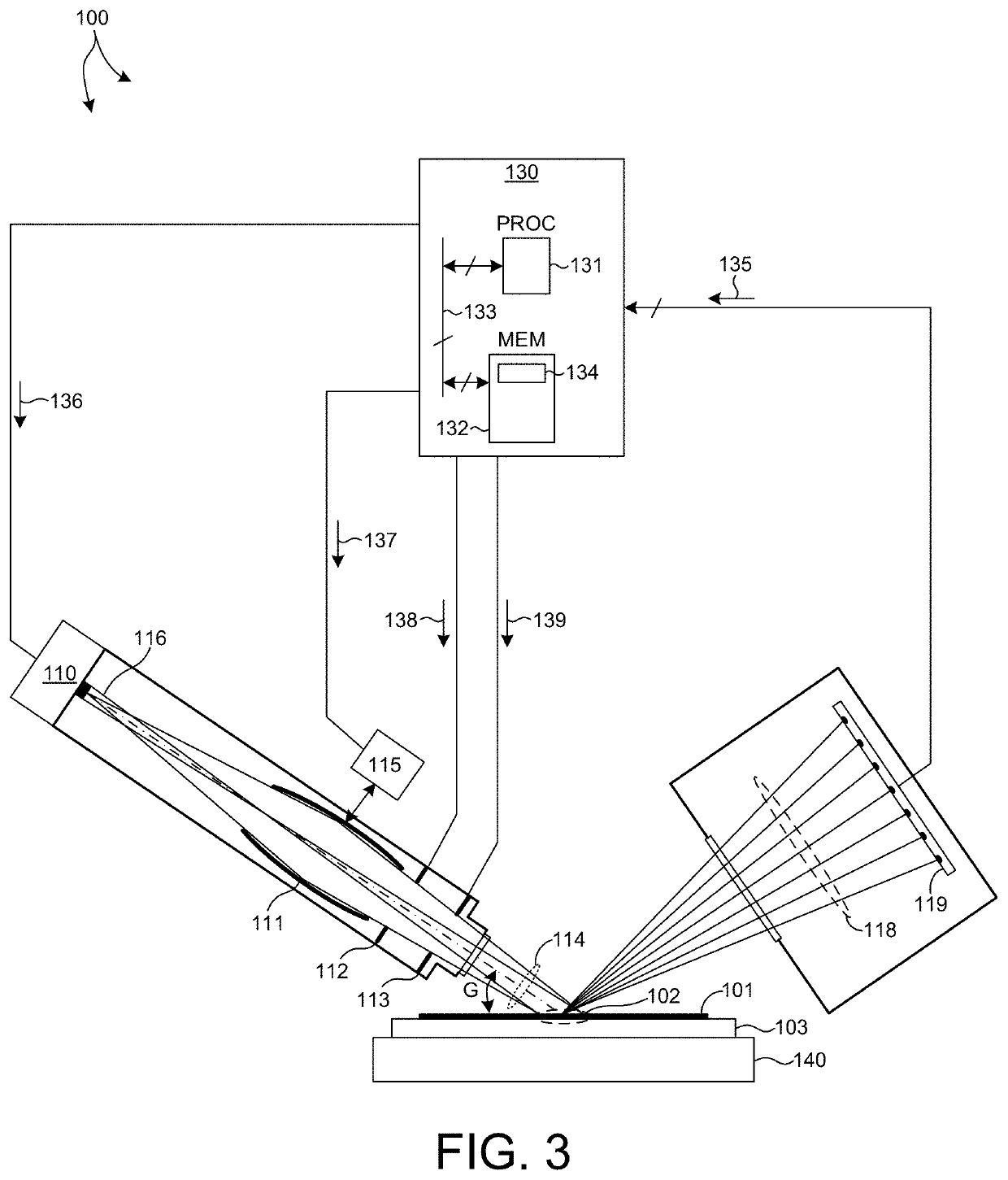Methods And Systems For Overlay Measurement Based On Soft X-Ray Scatterometry
a scatterometry and soft x-ray technology, applied in the field of metalrology systems and methods, can solve the problems of difficult optical radiation penetration to the bottom layer, difficult characterization, and increased difficulty in characterization, so as to achieve enhanced sensitivity to overlay among the layers corresponding with the predetermined subset of scattering vectors, and sufficient periodicity.
- Summary
- Abstract
- Description
- Claims
- Application Information
AI Technical Summary
Benefits of technology
Problems solved by technology
Method used
Image
Examples
Embodiment Construction
[0046]Reference will now be made in detail to background examples and some embodiments of the invention, examples of which are illustrated in the accompanying drawings.
[0047]FIG. 1 depicts a hardmask pattern of line structures 11 fabricated in a static random access memory (SRAM) area 10 of a microelectronic chip. The complex layout of the active region is created by combining multiple patterning techniques with cut masks. Cut masks selectively remove portions of the hardmask layer that is used to pattern the substrate into active regions. FIG. 2 depicts a bottom anti-reflective coating (BARC) layer 12 and a resist layer 13 disposed on top of the pattern of line structures depicted in FIG. 1. The resist layer is used to selectively remove part of the hardmask pattern below the openings 14 of the resist layer 13. As depicted in FIG. 1, the hardmask pattern of line structures 11 is buried by the BARC layer 12, even within the openings 14 of the resist layer 13.
[0048]To provide adequat...
PUM
| Property | Measurement | Unit |
|---|---|---|
| energy | aaaaa | aaaaa |
| energy | aaaaa | aaaaa |
| roughness | aaaaa | aaaaa |
Abstract
Description
Claims
Application Information
 Login to View More
Login to View More - R&D
- Intellectual Property
- Life Sciences
- Materials
- Tech Scout
- Unparalleled Data Quality
- Higher Quality Content
- 60% Fewer Hallucinations
Browse by: Latest US Patents, China's latest patents, Technical Efficacy Thesaurus, Application Domain, Technology Topic, Popular Technical Reports.
© 2025 PatSnap. All rights reserved.Legal|Privacy policy|Modern Slavery Act Transparency Statement|Sitemap|About US| Contact US: help@patsnap.com



